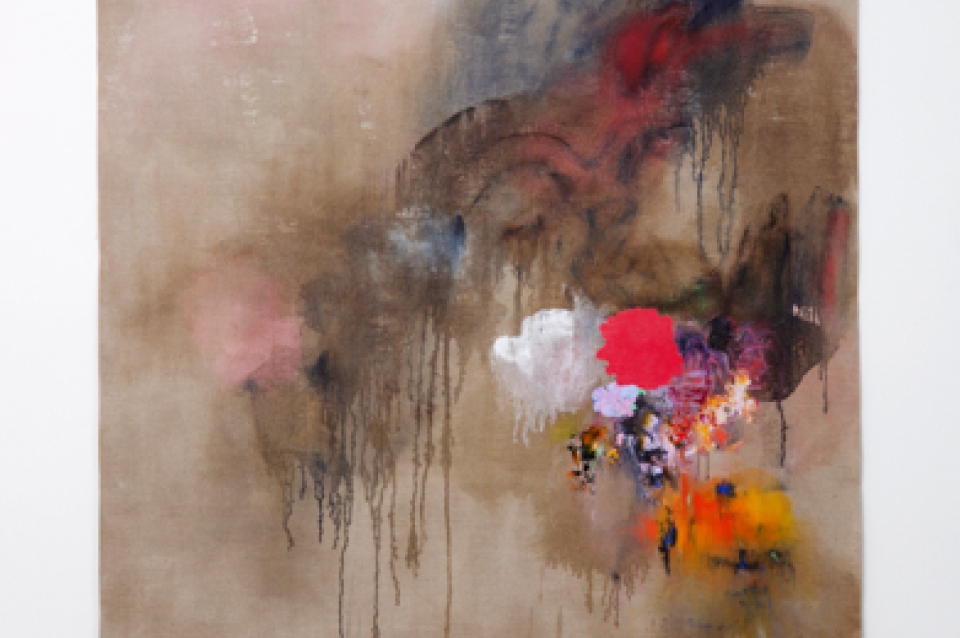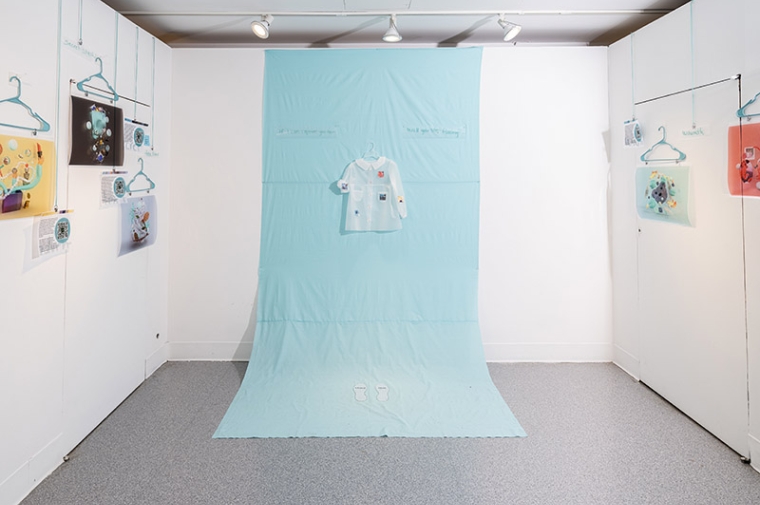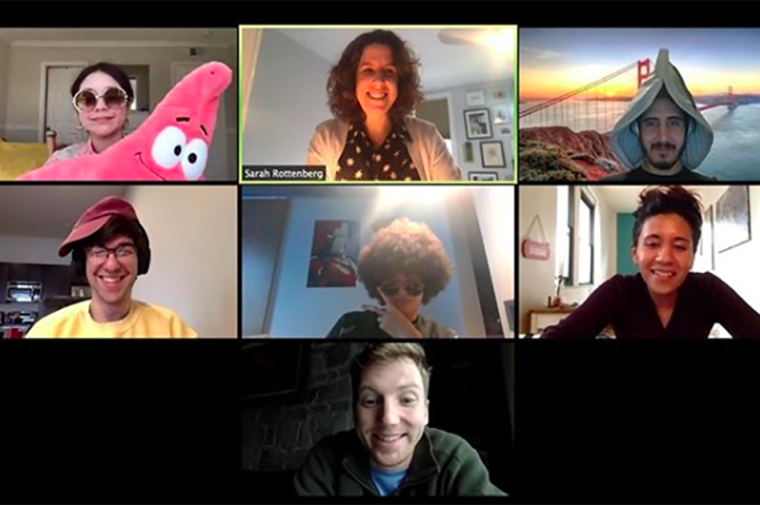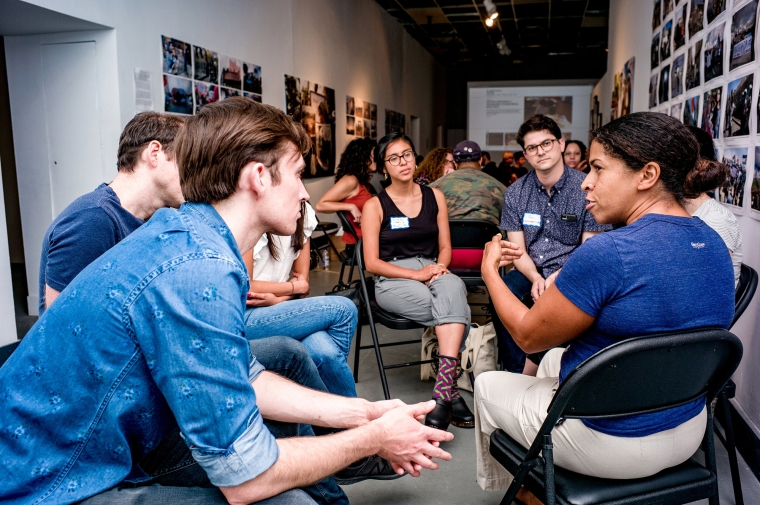November 3, 2014
Stuart Weitzman School of Design
102 Meyerson Hall
210 South 34th Street
Philadelphia, PA 19104
Get the latest Weitzman news in your Inbox
New Courses for Spring 2015
The Department of Fine Art will host 5 new courses next semester for Spring 2015. Read more about these great new courses below. For a full course listing of Fine Arts courses, please visit the Penn Registrar Course Roster.
FNAR 331/631
Interdisciplinary Studio: Sites of Color, Convergence, & Hybridity
Jackie Tileston
T/R 1:30-4:30PM
This course takes an experimental multimedia approach to investigating some of the boundaries in contemporary art making practices. Painting, photography, video, design and sculpture intersect, overlap, and converge in complicated ways. Projects will be designed to explore hybrid forms, collage, space/ installation, and color through a variety of strategic and conceptual proposals as students work towards unique ways of expanding their own work. Weekly readings, critiques, and presentations will be integrated with studio projects.
This studio/seminar is appropriate for students at all levels and from all areas of Fine Arts and Design.
FNAR 247/547-401
Environmental Animation
Chris Landau
T/R 9AM-12PM
This studio-based course examines intersections of landscape, art, and architecture through the medium of 3D animation. As our experience and understanding of environments is increasingly defined by digital systems of representation, this course will define connections between biological, psychological, poetic and computational perspectives. We will draw on different data to use as inputs and drivers for the articulation of environments, from formal navigation of raster, vector, and 3D data to scripting or narration of more interconnected or agent ecosystems. This course will allow for a range of entry points from different disciplines. Assignments will range from proposal-focused objectives to the designing open-ended representational systems. We will examine and discuss standard visualization typologies such as the architectural walk-through and animated diagrams as well as filmic strategies all as starting points for creative reinterpretation of space.
We will primarily be using 3D Studio Max and After Effects with support from Rhino, Grasshopper, NextGen 3D-scanning, and, of course, scripting. Experience in landscape architecture, architecture, animation, programming, film, Photoshop, or graphic design is strongly encouraged but not required. This course will embrace a spirit of invention, experimentation and interdisciplinary cross-pollination.
FNAR 343/643-401
Language of Design
Sharka Hyland
M 4PM-8PM
This course will explore the changing relationship during the modern era between design (structure, model, plan of a work of art) and language (metaphor for a system of communication; speech, writing, literature).
Our readings and visual presentations will focus on topics in the decorative arts, painting, architecture, typography and visual communication. We will focus on primary sources in order to situate our inquiry in a larger historical context. The discussion will center on claims about the inherent meaning of forms, discuss different roles for design—as an ideological statement, as an agent of societal change, and as an idiosyncratic expression. Topics will also include the search for a universal visual language, attempts at bridging the perceived gap between spoken and written language, and the impact of visual form on the meaning of literary texts (particularly when the author has been involved). Students can suggest additional topics related to their field of study.
FNAR 146/546-401
Sculpture II: Object and Installation
Tom Bendsten
T/R 9AM-12PM
This course expands upon the skills and concepts developed in FNAR 145 Sculpture Practices. Students experiment with a variety of modes of production, while concentrating on the historical space between the art object and installation. In addition to these investigations, assignments relative to the history and social impact of these practices are reinforced through readings and group discussion.
FNAR 254/654-401
Printmaking & Publications: Intro to Independent Publishing and Artists' Publications
Kayla Romberger
T/R 9AM-12PM
This course introduces students to independent publishing and artists’ publications through print methods in letterpress, Risograph, and Xerox. The class will focus on the self-published artists’ zine/book as an affordable, accessible, and easily reproducible format for exploring ideas, disseminating artists’ work, and collaborating across disciplines. Students will learn a range of skills, including techniques in both mechanized and hand-pulled forms of printed media (Risograph, copy machine, Vandercook letterpress); short-run editions and binding; design and layout; pre-press and print production; and the web as it relates to and supports independent and democratic modes of distribution. Students will learn about and become acquainted with some of the most significant independent publishers working today and throughout history. Students will leave the class having completed three individual projects: a 16-page booklet/zine, a carefully considered online publication, and a final collaborative book designed, developed, and published as a class. The course commences with a field trip to New York City’s Printed Matter, one the oldest and most important nonprofit facilities dedicated to the promotion of artists’ books, where students will be encouraged to submit a publication by semester’s end.


 Expand Image
Expand Image



